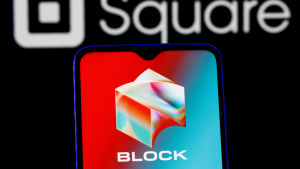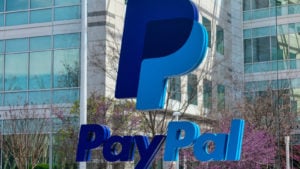It can be tough to give up on what seemed like a good bet, but in downtimes, it is important to single out growth stocks to sell.
One of the absolute worst things you can have in your portfolio is a growth stock that’s stopped growing. Those types of names are stocks that you need to sell before your investment account takes an oversized beating.
Don’t get me wrong here – growth stocks are great. I love a good growth stock that has strong momentum and operates in a sector that I know will be in demand.
And some of the names on this list of growth stocks to sell have had great rides. Many of them enjoyed oversized runs during the Covid-19 pandemic.
But that was then and this is now. Investing is all about “what have you done for me lately,” and these names are taking an extended break from profitability which makes them growth stocks to sell.
Maybe one day you’ll be able to add these back into your investment portfolio. But for now, these are F-rated growth stocks to sell now.
| PENN | Penn Entertainment | $34.34 |
| SHOP | Shopify | $34.20 |
| SQ | Block | $74.36 |
| CVNA | Carvana | $42.30 |
| PINS | $21.77 | |
| ZM | Zoom Video Communications | $99.50 |
| PYPL | PayPal Holdings | $96.56 |
Penn Entertainment (PENN)

Investors had high hopes that Penn Entertainment (NASDAQ:PENN) and its partnership with Barstool Sports would reap rewards. After all, the growth of legal sportsbooks outside Nevada and New Jersey was seen as a big winner for the gaming industry.
On top of that, Barstool’s platform and built-in audience seemed to be a natural fit as in-game betting looked to grow in popularity. Unfortunately, it hasn’t really worked out that way. PENN stock is down 33% so far this year with no real indications that the company will be able to turn around its fortunes.
Earnings in Q2 fed into the bearish sentiment. Penn managed to just beat revenues of $1.63 billion versus expectations of $1.6 billion, the company missed EPS estimates badly. It reported EPS of 15 cents versus EPS expectations of 50 cents.
Penn, meanwhile, is doubling down on its Barstool investment by exercising its rights to buy 100% of the company. (It had originally bought 36% of Barstool in early 2020 for $163 million.)
Penn doesn’t look like a good bet from here. It gets an “F” rating in the Portfolio Grader.
Shopify (SHOP)

E-commerce platform Shopify (NYSE:SHOP) is one of those post-pandemic stocks whose time has seemingly passed. When Covid-19 shutdowns forced everyone to stay at home and federal stimulus checks put a lot of extra money in peoples’ pockets, SHOP stock was a huge winner.
The company’s stock jumped 150% from the beginning of the Covid-19 pandemic in March 2020 through the end of that year.
Those gains continued through much of 2021, but the bottom began falling out in November. SHOP stock was as high as $176 in November 2021 (adjusting for its 10-for-1 stock split in June 2022), but since has fallen nearly 80%.
Shopify’s rapid rise fueled some heady spending – the company doubled its marketing expenses in 2021 to more than $275 million. Its research and development costs also more than doubled, to $274 million.
It also announced plans to spend $1 billion on capital expenditures by 2024, with an eye toward international expansion. Shopify also invested heavily in Affirm Holdings (NASDAQ:AFRM) and Global-E Online (NASDAQ:GLBE), both of which also recorded big losses this year.
With Shopify recording big losses as of late from its investments, SHOP stock has an “F” rating in the Portfolio Grader.
Block (SQ)

Block (NYSE:SQ), the payment processor formerly known as Square, has been most hurt by the downturn in cryptocurrency. SQ made a big investment in Bitcoin (CCC:BTC-USD) in recent years.
The company reported a loss of $208 million in the second quarter, or 36 cents per share, and posted revenue of $4.4 billion. Analysts had been expecting revenue of $4.33 billion, so at least that was a positive.
Block said it would slow its hiring and also slash its Bitcoin investment target by $250 million. Its Bitcoin gross profit in the second quarter dropped 24% to $41 million.
As long as Block is negatively affected by cryptocurrency issues, this is a stock to avoid. SQ has an “F” rating in the Portfolio Grader.
Carvana (CVNA)

I can’t blame anyone for being excited about Carvana (NYSE:CVNA) stock when it made its debut in 2017 on the New York Stock Exchange. It’s admittedly a cool concept.
CVNA eliminated the tiresome haggling process still favored by many car dealerships. Then it threw in those car vending machines that make buying a vehicle an event, not a chore, but that doesn’t mean it’s a good investment.
The company posted a loss of $321 million in the second quarter and has year-to-date losses of $491 million. The demand for its customer loans – a major revenue source for CVNA stock – is slowing.
In the second quarter, Carvana missed earnings estimates, posting $3.88 billion in revenue and an EPS loss of $2.35 versus analysts’ expectations of $4.01 billion and an EPS loss of $1.98.
Carvana stock is down 81% so far this year, and has an “F” rating in the Portfolio Grader.
Pinterest (PINS)

Pinterest (NYSE:PINS) is another e-commerce stock that is having a challenging run after the Covid-19 pandemic. PINS stock went up 237% from the beginning of the pandemic until the end of 2020, but that didn’t last.
Pinterest is more of a social media stock than an e-commerce play. Its users create online pinboards about fashion, photos, videos or other topics and can also buy products directly from the platform.
Pinterest shows targeted ads that promote products that most closely match users’ interests.
Second-quarter earnings show that the company’s revenue growth slowed to 9%, which is its lowest point in two years. GAAP net earnings were a loss of $43 million, and global monthly active users declined 5% year over year.
The company issued guidance for the third quarter that was underwhelming, with year-over-year revenue growth in the “mid-single digits.” PINS stock as an “F” rating in the Portfolio Grader.
Zoom Video Communications (ZM)

Zoom Video Communications (NASDAQ:ZM) is the quintessential pandemic stock. The company’s video platform was essential as Covid-19 forced companies to work from home and students to study remotely.
Even after facing a host of security problems, ZM stock zoomed to the top of the heap in 2020 and 2021. At one point it topped $550 per share, giving lucky investors a return of 432%.
Not so much now, though.
ZM stock is down 62% from its highs and 45% so far this year, and it faces serious competition from bigger companies with deeper pocketbooks – Alphabet (NASDAQ:GOOG, NASDAQ:GOOGL), which offers Google Workspace, and Microsoft (NASDAQ:MSFT), which offers Teams.
Earnings for Zoom’s fiscal first quarter 2023 were a mild surprise, as the company was able to hit analysts’ estimates for revenue at $1.07 billion. EPS came in at $1.03 per share, which was better than the 87 cents that analysts projected.
There are too many challenges with ZM today in a post-pandemic world. Zoom has an “F” rating in the Portfolio Grader.
PayPal Holdings (PYPL)
Fintech payments company PayPal Holdings (NASDAQ:PYPL) has lost nearly two-thirds of its value over the last year, falling 63% in 12 months and 48% so far in 2022.
Earnings in the second quarter weren’t anything to write home about, but they were at least better than expected.
Revenue of $6.81 billion was better than the $6.78 billion that analysts expected. EPS of 93 cents per share was 6 cents better than the Street predicted.
PayPal is now in cost-cutting mode. It announced initiatives that should help it save $900 million this year and $1.3 billion in 2023. PayPal also is increasing its share buybacks ($750 million in the second quarter, and seems to be shifting from a growth stock to more of a value play like Mastercard (NYSE:MA) and Visa (NYSE:V).
If you’re looking for a solid growth pick, PYPL stock doesn’t fit the bill and it won’t until the stock price finally begins to turn around. PayPal has an “F” rating in the Portfolio Grader.
On the date of publication, neither Louis Navellier nor the InvestorPlace Research Staff member primarily responsible for this article held (either directly or indirectly) any positions in the securities mentioned in this article.

